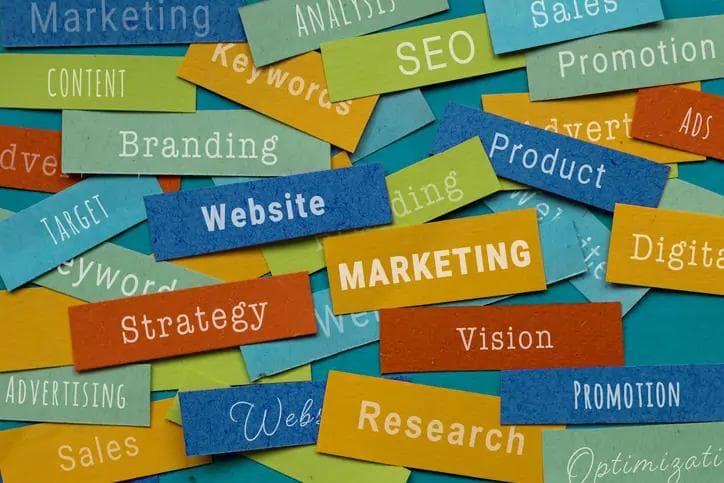Driving sustainable change: How the C-suite can boost the ESG agenda through procurement
Driving sustainable change: How the C-suite can boost the ESG agenda through procurement
Published by Jessica Weisman-Pitts
Posted on October 27, 2022

Published by Jessica Weisman-Pitts
Posted on October 27, 2022

By Edward Cox, Principal at Efficio Consulting
Whether you’re a passionate supporter of driving sustainability improvement or a sceptical follower, chances are you’ve been drawn more deeply into the sustainability debate over the past year or two. But now is the time to act … and deliver.
Today, companies across the globe are struggling to make progress in the race to net-zero, with many organisations falling behind on setting climate transition plans.
And it’s no wonder – the move towards more sustainable practices is firmly on the C-suite agenda, but the journey isn’t an easy one. Other priorities, such as saving costs and ensuring business continuity during turbulence, often take precedence on boardroom agendas, pushing ESG issues lower on the priority list.
However, the cost of ignoring the sustainability agenda is significant.
There’s a growing recognition that procurement can play a key role in driving actionable change, thanks to third-party spend accounting for a significant percentage of revenue. This opens great potential when it comes to reducing both environmental and social impact. Procurement’s prime position to be a lever for sustainable change can be maximised by following our 10 steps to sustainable procurement, based on ESG work we’ve done both internally and with our clients.
Step 1: Understand organisational objectives
Driving any sort of actionable change begins with setting and understanding organisational objectives. Many organisations fall into the trap of wanting to improve everything all at once, but this simply isn’t realistic. Understanding what is truly important to your organisation and where you can help needs to be the very first step.
Step 2: Engage sustainability leads
If your organisation has a sustainability function, then it should be setting the business-level strategy from which the procurement team derives its own strategy. This sustainability function should also act as the Subject Matter Experts (SMEs) to guide around policy, sustainability approaches, and requirements.
Step 3: Baseline your approach and capability
As the agents of change, your team needs to be equipped with the right targets, skills, and tools, so make an honest assessment of your current capability. Does the team understand the sustainability agenda and how it can play a part? Is sustainability built into the fabric of the procurement process, especially in category strategies?
Step 4: Triage your spend categories
A key step is to triage spend against agreed sustainability themes to understand which spend areas can drive which themes. These areas should be weighted by spend, sustainability opportunity, and ability to impact.
Step 5: Improve your sourcing approach
Sustainable procurement does not require a new skill set, but it does require a new mindset. Companies must train and encourage their teams to think in terms of cost, service, and ESG and, as such, to adapt sourcing methodologies to reflect this additional parameter. Implementing new tender questions (refined by theme or capital), new scoring and evaluation approaches, as well as effective sign-off governance will ensure ESG is effectively considered and does not become a box to be ticked.
Step 6: Implement a SRM (Supplier Relationship Management) approach
Sustainability requires collaboration, and this means ensuring suppliers align on approaches. Business strategies should be underpinned with macro goals shared by the many, distilled into multiple and sustained changes to behaviour. In turn, this should mirror a more collaborative approach that seeks to deliver long-term value through better engagement with supplier partners. A fair and well-communicated roadmap is essential to success.
Step 7: Invest in training
Whilst there will be motivation in procurement teams to drive change, it is all too easy to revert to previous behaviours when the next cost target lands or performance reviews come and they do not evaluate ESG value delivery. Training is key to embed change. Start with the basics and move towards a specific toolkit.
Step 8: Establish clear Key Performance Indicators (KPIs)
Currently, sustainability improvements are being hindered by an inherent lack of accurate data. Without it, organisations find it hard to make decisions as they lack the objective insight – and they then fail to get the feedback loop that informs them of the impact of their decision making. Each sustainability theme should have a measure and target while the data improves – even if they are crude at first. If you can convert the KPI into a currency measure (£/$,€ … ), even better.
Step 9: Build a playbook
Each of these steps should be encapsulated into a playbook that can act as a guide and governance to procurement teams – laying out what Procurement will do, how it will do it, and whom it will engage with to maximise outcomes. The sustainability landscape is developing quickly, and we all need to absorb best practice as we find them.
Step 10: Communicate your policy
Sustainability-related issues present a key opportunity for Procurement to rebrand itself as more than a business function for delivering cost optimisation, and instead one that can be a meaningful driver of the sustainability agenda – one of total value, rather than total cost.
Alongside board-level commitment, procurement is the key catalyst for organisations to successfully drive measurable sustainability improvement and achieve their ESG objectives, as they can select and nurture relationships, partnerships, and strategies that best promote their company agenda.
Explore more articles in the Business category











